Dr. Tyler J. Wenzel (Twitter: @TylerJWenzel, Instagram: @TylerJWenzel, LinkedIn: https://www.linkedin.com/in/tylerjwenzel/), is a postdoctoral fellow currently affiliated with the University of Saskatchewan (Canada), where he oversees the facility for the mass, reproducible production of two-dimensional and three-dimensional stem cell-derived cultures. His expertise is on the derivation of central nervous system-related cell types from pluripotent stem cells, and how these technologies may be used to treat neurological disorders through non-invasive routes of administration. He is passionate about reproducible science, bioethics, science communication as well as health and workplace equity.
Summer by Design, run by the University of Toronto’s Medicine by Design, in partnership with CCRM, Rotman School of Management and the Stem Cell Network, has been part of the global cell and gene therapy community since 2016, bringing together researchers from across the globe to Toronto, Canada, to learn about the process of commercialization. But, for the last several years, this annual entrepreneurial program did not see the light of day due to the health restrictions put in place by the COVID-19 pandemic. 2023 marked the first time in four years that this program was run in person, giving 31 trainees from around the world the opportunity to learn from industry experts about commercializing technologies in the field of regenerative medicine. I was one of the trainees who got the opportunity to fly to Toronto, but was the experience worth halting my experiments for over half a month? In this post, let’s talk about the biggest, but surprising, takeaways I had regarding Summer by Design 2023.
The biggest benefit to Summer by Design is that you will make connections from around the world and expand your network
There are many aspects of Summer by Design that are great, and the workshop is more intense and challenging than I expected. But, I think all these experiences are ultimately to the benefit of the program as they allow you (and possibly even force you) to create deep bonds with the other attendees. From my experience, I find bonds like these readily form in intense, small group activities and the friendships stand the test of time. I honestly believe that I will be lifelong friends with many of the people in my cohort and, if I am ever in their home country, they will probably be offended if I do not visit them! It is so cool to know that, for example, if I find myself in Australia, Germany or the United Kingdom for a conference (or even vacation), I will have people I know and can meet up with. Without a doubt the rest of my cohort would likely feel the same, as I heard this several times on our final days in Toronto. We were so close that we were very comfortable feeding each other during our final dinner! If you are a trainee who is missing that sense of belonging somewhere, I would recommend applying to Summer by Design. In addition to all the valuable learnings, you might just meet a new best friend.
While I think the new friendships are the best part of Summer by Design, knowing people from around the world and getting to know their research expertise comes with many additional benefits. As two quick examples, I know if I ever need to design a new bioreactor, I can reach out to Rasha Rezk, an engineer at the University of York, and if I want to start engineering cardiac tissue, I have Veronika Fricke, Technical University Munich, on speed dial. Knowing people from a variety of different fields has benefitted me several times throughout my career, as sometimes texting your new and very smart friend that you met at Summer by Design gives you an answer faster than hours of reading the literature — true story.
Summer by Design is an intense workshop, so try to “log out” from your workplace
As mentioned, Summer by Design was far more intense than I anticipated. The workshop itself spanned ten days —eight of the days usually involved eight to ten hours of lectures, and the remaining two days were on the weekend and considered free days. Despite these weekend days being considered “free,” there were some tasks that you are expected to do on the weekend, including pre-readings and preparing a three-minute speech. Many of us were quite exhausted by the time the weekend came around, and so some time was spent resting.
If you are planning to attend Summer by Design, I recommend that you do your best to make sure that your bosses let you log out from your lab duties. There were many attendees who were still being asked to attend laboratory meetings, respond to emails, analyze and share data, as well as manage lab problems. While it is possible to do both, it will impact your learning. Several people in my cohort had to reluctantly step out of the room and miss lectures. Your bosses should be receptive to your professional development and therefore open to letting you step away from the lab for two weeks.
Would I do it again?
Without hesitation, I would apply to attend Summer by Design again. The friendships I made in two weeks were invaluable. The content itself was geared towards people without much prior knowledge of patents, commercialization, reimbursement and regulatory policies, and mostly had a Canadian or North American perspective. These perspectives are still useful to international attendees, as North America is the biggest market for regenerative medicine products. However, international institutions may have additional requirements for developing intellectual property. As someone who has prior experience with entrepreneurship, capital fundraising and the patent process, roughly half the content affirmed what I already knew, but the program allowed me to ask questions directly to industry experts and get immediate answers— answers which would have taken months to get through emails.
Summer by Design is a great crash course in commercialization. One of my favorite days in the program involved listening to the journeys of young biotechnology entrepreneurs. In the future, I hope Medicine by Design further develops this aspect of the program’s curriculum to allow for a deep, transparent dive into the path taken by these entrepreneurs to develop their product. I would have loved to hear more stories about the specific steps the entrepreneurs took to develop their product, the support they had (such as mentors), and the struggles they faced (both salary struggles and business roadblocks). If this is information you want, there are opportunities to ask questions during breaks, but I wish there were additional days to meet biotechnology entrepreneurs as well as mentors looking for the next product to help bring to market.
If you are on the fence about applying for 2024, just do it. And, if you want to know more about the Summer by Design 2023 program, keep your eyes on the Signals blog, as I will be diving deeper into the topics discussed during the workshop!
Guest
Latest posts by Guest (see all)
- Regenerative immunotherapy: Hope for chronic autoimmune diseases - September 16, 2025
- Canada’s regenerative revolution: Why AI is the catalyst - September 4, 2025
- Summer by Design: A launchpad for future entrepreneurs and industry scientists - August 14, 2025


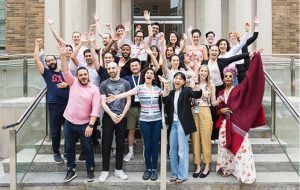
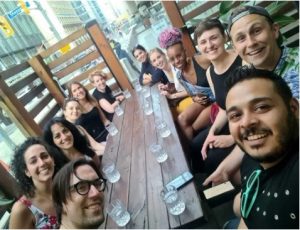
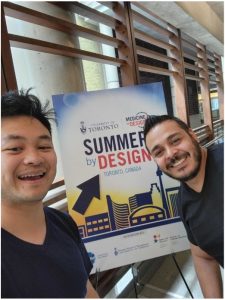
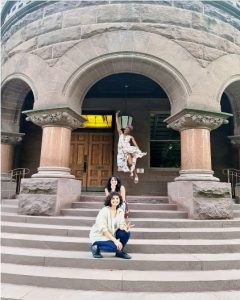
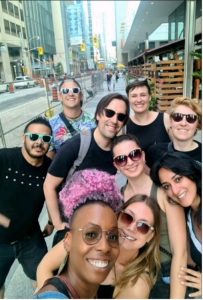




Comments